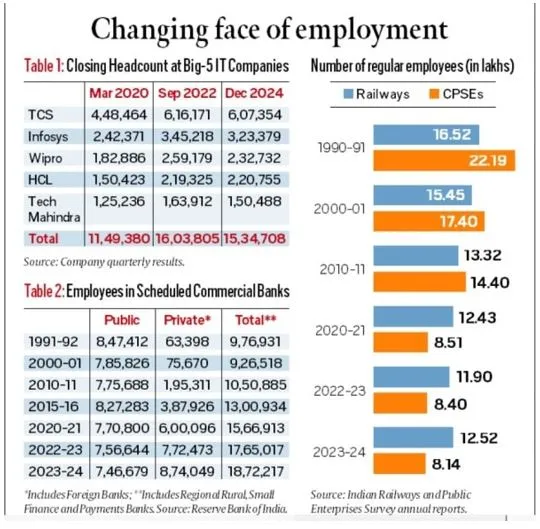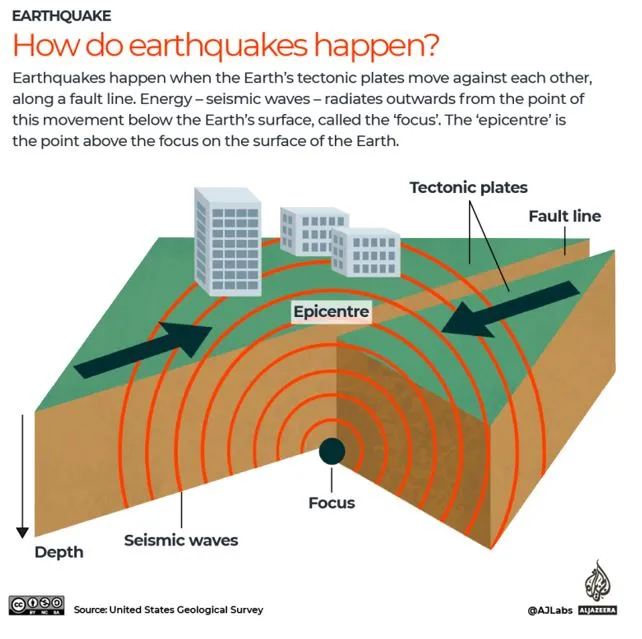

17th February 2025 (16 Topics)
Mains Issues
Context
India and the United States have launched a transformative bilateral initiative called the Transforming Relationship Utilizing Strategic Technology (TRUST), aimed at boosting cooperation in the recovery and processing of critical minerals such as lithium and rare earth elements (REEs).
What is the TRUST Initiative?
- The TRUST Initiative aims to reduce barriers to technology transfer, address export controls, and enhance high-tech commerce.
- It will deepen the collaboration between India and the U.S. across various strategic sectors like defense, artificial intelligence (AI), semiconductors, quantum computing, and pharmaceuticals.
- The TRUST initiative will focus on the following aspects:
- Critical Minerals Supply Chains: The two countries will work together to establish strong supply chains for critical minerals such as lithium, cobalt, and nickel, which are essential for technologies in defense, renewable energy, and electric vehicles.
- Strategic Mineral Recovery and Processing: There will be an emphasis on the recovery and processing of strategic minerals, ensuring that these resources are sustainably managed and processed in both nations.
- Tech Transfer and High-Tech Commerce: TRUST aims to reduce barriers for technology transfer between the two nations, enhancing high-tech commerce across multiple sectors, including biotechnology and space exploration.
What is the need of the initiative?
- The TRUST initiative comes at a time when the global supply chains for these critical minerals are heavily dominated by China, which controls nearly 70% of the global REE production and much of the processing infrastructure.
China’s dominance in critical minerals
|
- This dominance has raised concerns about technological sovereignty and national security, particularly for countries like India and the U.S., which rely on these minerals for military and high-tech applications.
Potential Benefits of TRUST
- Enhanced Innovation: TRUST will foster collaboration among governments, academia, and the private sector to drive innovation in areas such as defense, artificial intelligence, biotechnology, and energy.
- Boost to Strategic Industries: The focus on critical minerals will directly benefit industries that are foundational to national security and technological progress, including semiconductors, quantum computing, and space exploration.
- Strengthened Global Supply Chains: By diversifying sources of critical minerals, India and the U.S. can reduce dependency on a single country (China), ensuring more stable and secure access to resources.
- Strategic Importance: The strategic importance of critical minerals, especially lithium and REEs, cannot be overstated. These elements are vital for advanced technologies in key sectors such as:
- Defense: For manufacturing high-performance magnets used in missiles, fighter jets, and radar systems.
- Energy: Lithium, cobalt, and nickel are essential for battery storage technologies, especially in electric vehicles and renewable energy storage.
- Semiconductors and AI: Gallium and indium are crucial components in the development of semiconductors and AI hardware.
- Space: Heat-resistant alloys and lightweight materials such as scandium are critical for space exploration.
Challenges and Expectations
- Tax Benefits: Unlike Japan, which was granted tax benefits under the S. Inflation Reduction Act (IRA) for critical raw materials and battery components, Indian companies in the battery sector may not immediately benefit from such privileges.
- Technology Transfer: The success of the initiative will depend on reducing barriers to technology transfer, allowing Indian companies to leverage cutting-edge technologies in mineral processing and battery manufacturing.
What are Critical Minerals?
Previous Collaborations and National Programs
|


Mains Issues
Context
India, in partnership with its Indian Ocean neighbors like Singapore and Oman, is hosting the Eighth Indian Ocean Conference (IOC) in Muscat, Oman. This conference is a significant event to discuss the future and strategic importance of the Indian Ocean Region (IOR).
Indian Ocean’s Role
- The Indian Ocean has played a vital role in trade and cultural exchanges for centuries. It is named for India’s historical influence in the region.
- The Indian Ocean has been called "Hind Mahasagar" or "Indian Ocean" for millennia due to India’s central role in trade and culture.
- The Indian Ocean is unique compared to other oceans (Atlantic and Arctic), as it is not just a body of water but also a region rich in civilizational and cultural ties.
- Strategic Importance of the Indian Ocean:
- The Indian Ocean is home to 26 countries, and its waters serve as a lifeline for many other landlocked nations like Nepal and Bhutan.
- Economic and military power in the Indian Ocean is crucial for global trade and national security. It has historically been a key trade route for countries like India, connecting East and West through the maritime Silk Route.
- The ocean's strategic importance has grown in recent years, with a focus on its potential to be a region of peace and cooperation amid rising geopolitical competition, especially between major powers.
India’s role in Indian Ocean
- From the first millennium, countries like India, with its merchant groups like Manigramam Chettis and kings like the Cholas and Pallavas, established vital maritime trade links with Arab lands and Southeast Asia (e.g., Philippines and Indonesia).
- Over time, India’s economic power waned as European colonial powers, especially the Portuguese, Dutch, French, and British, dominated the Indian Ocean. The British, despite being prominent seafarers, never built a robust naval or shipbuilding infrastructure in the region, a failure that persisted even after India’s independence.
- India’s Maritime Weakness Post-Independence: Post-independence, India’s naval and maritime capabilities were neglected, as the country focused on land-based military strategies. This led to India falling behind in key areas like shipbuilding and naval power.
- Currently, India ranks 20th in global shipbuilding, holding just 06% of the global market share.
India’s Realization and Strategic Focus:
- India’s peninsular geography and reliance on maritime trade made it essential for India to prioritize its naval and maritime development.
- For decades, India did not fully recognize the potential of the Indian Ocean Region (IOR). However, over time, India realized the region's growing importance.
- The Indian Ocean is now seen as a crucial part of India’s foreign policy. India’s trade, especially energy trade, passes through the Indian Ocean.
- Nearly 80% of India’s external trade and 90% of its energy imports travel through these oceanic routes.
Challenges in the Indian Ocean:
- The region faces numerous challenges, including:
- Piracy and terrorism at sea
- Illegal fishing, human trafficking, and arms running
- Environmental challenges like rising sea levels
- Disaster relief and humanitarian crises
- The region is also becoming a high-tech battleground with the proliferation of undersea communication cables, managed by companies like Huawei (China) and European firms. This indicates the geopolitical rivalry in the region, with major powers competing for influence.
Fact BoxIndian Ocean
Key-Initiatives
|


Mains Issues
Context
India’s middle class has undergone significant transformation since independence, especially in the post-reform era. A key factor in this shift has been the transition from public sector employment to the private sector, which has seen a major surge since economic reforms began in the 1990s.
Key Points:
- Public vs. Private Sector Employment:
- Public Sector:
- In 1995, public sector employment was 194.7 lakh (including central/state governments and public sector undertakings), compared to 6 lakh in the private sector.
- By 2012, public sector employment had decreased to 1 lakh, while private sector employment rose to 119.7 lakh.
- Post-2012, the shift towards the private sector has continued, though data from the Ministry of Labour & Employment is no longer published after 2011-12.
- Public Sector:

- Decline in Public Sector Jobs: The Indian Railways saw a sharp drop in regular employees, from 16.5 lakh in 1990-91 to just 11.9 lakh in 2022-23. Public Sector Enterprises also saw a reduction, from 22.2 lakh in 1990-91 to just 8.1 lakh in 2023-24.
- Growth of the IT Sector:
- IT companies like Tata Consultancy Services (TCS) and Infosys saw massive growth in employment.
- TCS: From 45,714 employees in 2004-05 to 4,48,464 in 2020.
- Infosys: From 36,750 employees in 2004-05 to 2,42,371 in 2020.
- The pandemic boosted the IT sector, leading to 16 lakh employees in the top five IT companies by 2022.
- IT companies like Tata Consultancy Services (TCS) and Infosys saw massive growth in employment.
- Banking Sector Transformation:
- Public sector banks employed about 8.5 lakh people in 1991, but this decreased to 7.7 lakh by 2020.
- Private sector banks now employ more people than their public counterparts. In 2023-24, private sector banks employed 8.74 lakh people, surpassing public sector banks with 7.5 lakh employees.
Challenges and Shifts in Employment:
- Private Sector-Led Middle Class 2.0: The rise of industries like IT, finance, and banking created a new middle class, while the public sector-led middle class shrank with economic reforms.
- Structural Employment Challenge: Unlike China, which experienced a shift from agriculture to manufacturing, India has struggled to transfer large numbers of workers from agriculture to higher productivity sectors.
- As of 2023-24, agriculture still accounts for 2% of the workforce, while manufacturing has stagnated at 11.4%. The services sector has grown, but many jobs are informal, low-paying, and non-permanent.
- Gig Economy and Informal Jobs: The gig economy has expanded, with companies like Uber and Swiggy employing millions of delivery partners and drivers. However, these jobs are often low-paying and do not offer stability or benefits typically associated with middle-class employment.


Mains Issues
Context
Migration, both domestic and international, plays a crucial role in shaping economies and societies. In India, cities like Bengaluru, Delhi NCR, Hyderabad, Mumbai, Pune, and Chennai are emerging as hubs attracting skilled workers, mainly due to increased job opportunities, higher salaries, and better living standards. Internationally, countries like Australia, Canada, the US, Germany, and the UK are becoming popular destinations for migrants seeking better prospects.
Domestic Migration Trends
- Skilled Talent Movement in India: According to LinkedIn data, there has been a significant influx of skilled talent to six major cities in India over the last year: Bengaluru, Delhi NCR, Hyderabad, Mumbai, Pune, and Chennai.
- These cities attracted 76 lakh knowledge workers in the last 12 months.
- 120 multinational companies (MNCs) have set up global capability centres in these cities, attracting skilled tech and finance workers with attractive roles and salaries.
- Rural to Urban Migration: Every minute, 25-30 Indians move from rural areas to cities in search of better jobs and better living conditions.
- By 2030, the urban population in India is projected to reach 600 million.
- The movement is largely driven by the high demand for jobs and higher wages in urban areas.
- Economic Contribution of Southern India: Southern India, contributing about 31% of India's GDP despite having only 20% of the population, remains a key driver of India's economic growth.
- However, Southern states (like Tamil Nadu and Kerala) are experiencing rapid aging due to lower fertility rates and higher life expectancy.
- In contrast, Northern states like Uttar Pradesh, Bihar, and Madhya Pradesh are expected to have younger populations by 2036, leading to a potential migration from the North to South unless the northern states improve their job creation and GDP growth.
International Migration Trends
- Global Migration and Its Economic Impact: Cross-border migration generates an annual $9 trillion in global economic output, which could more than double by 2050.
- Approximately 280 million people, or 6% of the global population, live outside their country of birth. This group would form the fourth-largest country by population.
- Top Destinations for Migrant Workers: Australia, Canada, the US, Germany, and the UK are leading destinations for migrants.
- Australia has consistently ranked as the top choice for migrants since 2014. In the 2022-23 period, around half a million people moved to Australia.
- Canada and the US follow closely, offering high quality of life, better job opportunities, and a welcoming environment for migrants.
- Employment and Talent Shortages: That there is a global shortage of workers, particularly in countries like the US, China, Germany, the UK, and Canada. This shortage has resulted in about 30 million unfilled jobs across the world's 30 largest economies.
- Migration and Workforce Composition: 26% of board-level executives in the world’s largest companies were from foreign countries. This highlights the growing significance of international talent in leadership roles.
- Migration also leads to greater diversity in companies and promotes knowledge exchange across borders.
Key Factors Driving Migration
- Job Quality and Pay: High-quality jobs and higher salaries are among the top reasons for migration, whether it’s domestic (from rural to urban India) or international (from India to countries like the US and Australia).
- Living Conditions: The quality of life, including factors like climate, infrastructure, safety, and tax benefits, plays a major role in attracting workers to certain regions.
- Welcoming Culture: Countries that are inclusive and offer cultural acceptance are more likely to attract skilled talent.
Challenges for India and the Global Workforce
- India’s Graduate Output and Job Creation: India produces more than 1 crore graduates annually, but it faces challenges in providing jobs to this large pool of talent.
- Over 35 million Indians live outside India, and 1 lakh white-collar professionals left the country in the past year alone.
- Wages vs Profits: At the lower end of the workforce pyramid, many companies pay below-living wages, leading to high attrition
- Even in the IT sector, entry-level salaries have stagnated due to an oversupply of engineering graduates.
- The question arises: Can businesses pay higher wages to reduce attrition and increase productivity?


Mains Issues
Context
India, like many emerging markets, has turned to sovereign green bonds to help fund its transition to a low-carbon economy, but investor demand for these bonds remains weak, hindering their effectiveness.
What are Green Bonds?
- Green bonds are debt instruments issued by governments or corporations to raise capital for projects that promote environmental sustainability, such as reducing emissions or enhancing climate resilience.
- Green Premium (Greenium): The cost advantage of green bonds, where investors are typically willing to accept lower yields in exchange for supporting sustainable projects.
- Why Are Green Bonds Important?
- Sovereign Green Bonds (SGrBs) are issued by government entities, like India’s government, to fund energy-efficient projects, renewable energy, electric locomotives, metro projects, afforestation, etc.
- India has raised almost Rs 53,000 crore through SGrBs since 2022, with funds used for green projects like energy-efficient railways and renewable energy schemes.
Challenges in India’s Green Bond Market
- Low Investor Demand: India’s green bonds have not attracted significant interest, limiting the ability to raise funds efficiently.
- The greenium (expected lower borrowing cost) is much lower in India compared to global markets (India: 2-3 basis points, Global: 7-8 basis points).
- Liquidity Issues: Small issue sizes and lack of secondary market trading have reduced the appeal of India’s green bonds.
- Many investors prefer to hold bonds until maturity, limiting market liquidity.
- Lack of Ecosystem: There is a lack of social impact funds and responsible investing mandates in India, which are key drivers for green bond demand in other countries.
Impact of Low Demand
- The funding shortfall has led India to rely on general revenue to make up the difference. For example:
- The government initially planned to raise Rs 32,061 crore through green bonds in 2024-25, but this was lowered to Rs 25,298 crore.
- As a result, funding for key projects like grid-scale solar was drastically reduced from Rs 10,000 crore to Rs 1,300 crore.
Possible Solutions
- Explore Sustainability Bonds: Combining green and social projects into a single bond could attract more investor interest, as it has in other emerging markets.
- Improve Transparency: Better reporting and the publication of post-issuance allocation and impact reports could increase investor confidence.
- Partner with Multilateral Banks: Collaborating with development banks (e.g., the World Bank) to back green bonds with their credit ratings could enhance India’s attractiveness in the global market.


Mains Issues
Context
At least 18 people were killed and several others injured in a stampede at the New Delhi Railway Station.
What is a Stampede?
- A stampede is a chaotic and dangerous surge of people in a crowd, often triggered by perceived danger or the sudden loss of physical space.
- It leads to panic and irrational movement, with individuals rushing for self-protection.
- This disorderly movement can cause injuries and fatalities.
- It usually happens when a crowd behaves uncontrollably due to panic, overcrowding, or other triggers.
- Major Causes of Stampedes in India
- Structural Causes: Collapse of Makeshift Structures; Improper Design; Narrow Passageways; Difficult Terrain; Absence of Emergency Exits:
- Fire and Electricity Failures: Fire Hazards; Electricity Failures; Building Code Violations
- Crowd Behavior: Craze and Haste; Uncontrolled Rush at Exits; Anxious or Competitive Behavior; Unruly Behavior
- Security Issues: Understaffed Security; Lack of Surveillance; Inadequate Police Force
- Lack of Coordination Among Stakeholders: Poor Coordination; Inadequate Infrastructure; Communication Failures
Impact of Stampedes in India
- Human Trauma and Loss: Families face emotional and psychological trauma due to the loss of loved ones in stampedes. Survivors often experience physical injuries and emotional scars.
- Economic Hardship: Stampede victims often come from lower-income families. Their deaths lead to a loss of breadwinners, causing severe economic distress. Medical expenses and funeral costs further strain the victims' families.
- Loss of Social and Human Capital: The death of young people, especially women and children, leads to a loss of productive workforce, affecting the social and economic fabric of the community.
- Erosion of Trust: Repeated stampedes lead to a loss of faith in organizers and authorities responsible for safety, especially when poor planning and negligence are involved.
Challenges in Implementing Guidelines
Despite the presence of guidelines, implementation remains challenging due to:
- Lack of Adoption: Many state governments and local authorities fail to adopt or implement crowd management guidelines.
- High Tolerance for Crowds: Indian society has a higher tolerance for crowded spaces, which contributes to a greater risk of overcrowding during mass gatherings.
- Infrastructural Limitations: Rapid urbanization and a growing population make it harder to manage crowds in already overcrowded urban areas and religious sites.
- Accountability Issues: Many agencies responsible for overseeing mass gatherings fail to adhere to safety and security protocols, leading to insufficient planning and oversight.
Way Forward
To reduce the risk of stampedes, a multi-faceted approach is required:
- Legislation and Governance: The Supreme Court’s observation in the Uphaar Cinema Tragedy calls for comprehensive legislation dealing with tort liability and ensuring accountability of authorities.
- Technological Integration: Advanced technologies like HD CCTV, drones for surveillance, facial recognition, and robotic support should be implemented to better manage crowds.
- Capacity Evaluation: Before hosting mass gatherings, the capacity of the venue or structure should be assessed. Existing infrastructure problems must be addressed to ensure safety.
- Training and Professionalism: Special training programs for event managers, police, and security personnel should be implemented to enhance crowd control and disaster management capabilities.
- Engagement of Civil Society: Local NGOs, volunteers, and community organizations should be involved in disaster preparedness, traffic control, and crowd management.
- Learning from Global Best Practices: India should learn from global crowd management practices, such as the crowd control strategies used during the Hajj pilgrimage in Makkah, which successfully handles large-scale crowds.
NDMA’s guidelines for Crowd Management
|
PYQQ. Discuss the recent measures initiated in disaster management by the Government of India departing from the earlier reactive approach. (UPSC 2020) |


Prelims Articles
Context
Delhi witnessed a 4.0-magnitude earthquake, which shook the region with a loud bang. This event has raised questions about why Delhi is prone to such tremors and the geological factors at play.
Why is Delhi Prone to Earthquakes?
- Delhi lies in Seismic Zone IV, an area with a moderate to high risk of earthquakes according to the Seismic Zoning Map of India.
- Seismic Zones are categorized based on earthquake risk:
- Zone V: High risk (earthquakes greater than magnitude 7).
- Zone IV: Moderate to high risk (earthquakes in the range of magnitude 5-6, occasionally up to magnitude 7-8).
- Zone III: Moderate risk.
- Zone II: Low risk.
- The Delhi-Haridwar Ridge, a major geological structure, and Delhi-Moradabad Faults pass through the region, making Delhi more susceptible to seismic activity.
- These lineaments have the potential to generate earthquakes of magnitude 6-7 and occasionally even 7-8.
The Seismicity of Delhi
|
How Do Earthquakes Occur?
- Earthquakes happen due to the movement of tectonic plates, which form the Earth's crust.
- The Earth’s lithosphere (solid outer layer) is broken into large pieces called tectonic plates, which float on the semi-fluid mantle beneath them.
- When these plates move, they can cause stress on the Earth's crust.
- If the stress becomes too great, it results in faults (cracks in the Earth’s crust) along which the plates slide, releasing energy in the form of seismic waves, which causes an earthquake.
- Primary waves (P-waves): Fastest waves, travel through solids and liquids, and are the first to be detected.
- Secondary waves (S-waves): Slower than P-waves, only travel through solids and move perpendicularly.
- Surface waves: These are the slowest and most destructive waves, moving along the Earth's surface and causing the most damage.
- The point on the Earth's surface directly above where the earthquake begins is called the epicenter.



Prelims Articles
Context
President’s Rule has been imposed in Manipur after the resignation of Chief Minister N. Biren Singh, amid growing violence between the Meitei and Kuki-Zo communities.
What Does the Constitution Say?
- Under Article 356 of the Indian Constitution, the President can impose President’s Rule in a state when its government cannot function according to the Constitution.
- This can be triggered in cases of external aggression, internal disturbances, or violence, where the constitutional machinery fails.
- The President, on receiving a report from the Governor, can issue a proclamation if she is satisfied that the government in the state has failed to maintain constitutional governance.
- In such cases, the executive powers of the state are transferred to the Union Government, while the state legislature is either suspended or dissolved.
- The High Court's powers remain unaffected.
- Article 356(1) empowers the President to issue a proclamation if the state's government is not functioning as per the Constitution.
- However, such a proclamation must be presented before Parliament, where it must be approved by a simple majority within two months.
- Once approved, the President's Rule remains in effect for six months and can be extended every six months, with Parliamentary approval.
- It cannot last for more than three years without special conditions, such as difficulties in conducting state elections.
Differences Between ‘Constitutional Emergency’ and ‘National Emergency’
|
National Emergency |
Constitutional Emergency (President's Rule) |
|
|
Impact on Fundamental Rights
- During President’s Rule, fundamental rights of citizens are not suspended, unlike during a national emergency.
- Under Article 358, during a national emergency, certain freedoms under Article 19 can be suspended.
- However, during President’s Rule, the state continues to follow the Constitution, and rights are not affected.
Supreme Court's View on the Use of President's Rule
The Supreme Court of India has addressed the misuse of Article 356 in the landmark S.R. Bommai vs. Union of India (1994) judgment. The Court ruled that:
- Article 356 should only be invoked as a last resort, as per the Sarkaria Commission.
- The President’s proclamation is subject to judicial review, ensuring that it is not invoked for political gains.
- The Centre must issue a warning to the state government before invoking President’s Rule.
- The State Assembly cannot be dissolved without Parliament’s approval.
- The President’s Rule must be for breakdown of constitutional machinery, and not just law and order failures.


Prelims Articles
Context
The Prime Minister Dhan-Dhaanya Krishi Yojana (PMDKY) was introduced in the Union Budget 2025. The scheme is designed to focus on improving agricultural conditions in India's most underdeveloped districts, drawing inspiration from the success of the Aspirational Districts Programme (ADP) launched in 2018.
What is Prime Minister Dhan-Dhaanya Krishi Yojana (PMDKY)?
- The Prime Minister Dhan-Dhaanya Krishi Yojana (PMDKY) is an ambitious initiative to uplift India's agricultural sector, particularly in backward districts.
- PMDKY takes inspiration from the Aspirational Districts Programme (ADP).
- Targeted Districts: PMDKY will focus on 100 districts identified based on three key parameters:
- Low agricultural productivity.
- Moderate crop intensity.
- Below-average access to farm credit.
- Objectives: The primary goals of PMDKY are:
-
- Enhance Agricultural Productivity: Increase crop yield and improve the efficiency of farming practices in the targeted districts.
- Crop Diversification and Sustainable Practices: Encourage farmers to adopt diversified cropping patterns, reduce over-reliance on single crops, and promote sustainable agricultural techniques.
- Improve Post-Harvest Storage: Build better storage infrastructure at the panchayat and block level to reduce crop wastage and enhance food security.
- Boost Irrigation Facilities: Improve and expand irrigation networks to ensure reliable water supply for farmers, helping mitigate the risks of crop failure due to irregular rainfall patterns.
- Facilitate Credit Availability: Ensure farmers in these districts have easier access to long-term and short-term credit to support their agricultural activities.
- The scheme will be implemented through existing agriculture schemes under the Ministry of Agriculture and Farmers' Welfare and the Ministry of Fisheries, Animal Husbandry, and Dairying.
Aspirational Districts Programme (ADP)
|


Prelims Articles
Context
The government recently released the Report on “Status of Devolution to Panchayats in States”.
Key Findings of the 2023 Report
- Overall Devolution Progress: Devolution improved from 9% to 43.9% between 2013-14 and 2021-22, showing gradual empowerment of Panchayats.
- Capacity Building: The capacity enhancement dimension improved significantly from 44% to 54.6% due to programs like Rashtriya Gram Swaraj Abhiyan (RGSA).
- Functionaries: The recruitment and strengthening of personnel at Panchayats increased from 6% to 50.9%.
- Top Performing States:
- Karnataka ranked 1st overall, excelling in financial management and accountability.
- Uttar Pradesh made a remarkable leap from 15th to 5th, driven by anti-corruption measures and transparency reforms.
- Other top states include Kerala, Tamil Nadu, Maharashtra, and Tripura.
About Panchayat Devolution Index (PDI)
About Panchayat Raj System
|


Prelims Articles
Context
Loggerhead turtles use Earth's magnetic field for navigation, creating a "magnetic map" to remember locations associated with food. A study in Nature found that turtles can learn and distinguish magnetic signatures of different areas, demonstrated by their "turtle dance" when in a familiar magnetic field linked to feeding.
About
- Loggerhead turtles are large sea turtles known for their strong, broad heads.
- They grow slowly and don’t reach maturity until about 35 years old.
- These turtles live in warm ocean waters around the world, and they are the most common sea turtle along the U.S. coasts.
- Female loggerheads come ashore only to nest. After mating in the ocean, they dig a nest on the beach and lay around 100-120 eggs. The baby turtles (hatchlings) emerge after a few weeks and head straight into the ocean.
- Juvenile loggerheads spend 7-12 years in the open ocean, usually hanging around floating seaweed and eating small marine animals.
- They can travel across oceans and may return to their birthplace to nest when they are older.
- Range: Temperate subtropical and tropical regions of the Atlantic, Pacific, and Indian Oceans.
- The biggest nesting sites for loggerhead turtles are along the southeastern U.S. and the coast of Oman.
- IUCN Status: Vulnerable


Prelims Articles
Context
U.S. has announced to increase military sales to India by billions of dollars, including the potential provision of F-35 stealth fighter jets.
What is the F-35?
- The F-35 Joint Strike Fighter (JSF) is a next-generation, multi-role, single-seat fighter aircraft developed by the U.S. It comes in three variants:
- F-35A: Conventional take-off and landing (CTOL), designed for the U.S. Air Force.
- F-35B: Short take-off and vertical landing (STOVL), intended for the U.S. Marine Corps.
- F-35C: Carrier-based variant for U.S. Navy and Marine Corps.
- The F-35 is designed to operate for decades, offering advanced stealth capabilities, superior avionics, and versatility in a variety of combat scenarios.
- It has been developed in partnership with multiple international allies and is considered the pinnacle of modern fighter technology.
|
India’s Ongoing Fighter Development Programs
|


Prelims Articles
Context
Russia made a major announcement regarding the development of a new, personalized mRNA-based cancer treatment. The vaccine, expected to be available by early 2025, has shown promising results in pre-clinical trials by suppressing tumor growth and preventing metastasis (spread of cancer cells).
What is an mRNA Cancer ‘Vaccine’?
- An mRNA cancer vaccine is a form of immunotherapy, a treatment that aims to boost the body’s immune system to recognize and destroy cancer cells.
- Unlike traditional vaccines that prevent infections by using weakened or inactivated pathogens, an mRNA vaccine works by introducing genetic information (mRNA) to instruct the body’s cells to produce specific proteins.
- These proteins act as antigens, which the immune system can recognize and target for destruction.
- In cancer treatment, these mRNA vaccines are not for prevention. Instead, they are used in patients who already have cancer.
- The goal is to help the immune system identify and attack cancer cells, which often develop mechanisms to avoid detection by the immune system.
How Do These Vaccines Work?
- Cancer cells can evade detection by the body’s immune system, which allows the tumors to grow and spread.
- Immunotherapy, including mRNA vaccines, aims to overcome this challenge by boosting the body’s immune response to recognize and destroy cancer cells.
- The mRNA cancer vaccine works by delivering a blueprint (mRNA) into the body’s cells, which instructs the cells to produce certain proteins (antigens) that are specific to the cancer cells.
- The immune system then recognizes these antigens as foreign and mounts an attack against the cancerous cells.
- Since this therapy is personalized, the vaccine is tailored to target specific antigens present in the individual patient’s tumor, making it more precise and potentially more effective than traditional treatments.
- This method is different from chemotherapy, which often harms healthy cells along with cancer cells. In contrast, immunotherapy aims to target only cancer cells, leading to fewer side effects.
Key Differences Between mRNA Vaccines for Cancer and Traditional Vaccines
|


Editorials
Context
The 75th anniversary of the Indian Constitution has passed, but the critical issue of strengthening panchayati raj institutions has been sidelined. Despite the 73rd Constitutional Amendment of 1992, which established a three-tier system of local governance, the momentum towards decentralization in India has stalled, with new shifts in technology, governance, and urbanization challenging the relevance of panchayats.
Decline in Public Participation and Political Impact
- Limited Local Involvement: The initial enthusiasm around panchayati raj institutions has waned due to a decline in local participation.
- Dependence on Centralized Schemes: Panchayats have become heavily dependent on centrally sponsored schemes for funding, reducing their autonomy.
- Politicization of Local Governance: Political parties' involvement in panchayat elections has led to politicization, diminishing the original intent of empowering local self-governance.
Fiscal and Administrative Constraints
- Stagnation of Administrative Decentralization: States have not devolved full administrative control to local bodies, with less than 20% of states implementing all the 29 subjects from the Constitution’s Eleventh Schedule.
- Loss of Fiscal Autonomy: The reduction in untied grants, from 85% under the 13th Finance Commission to 60% under the 15th, has limited the financial independence of panchayats.
- Centralization of Control: The central government has gained more control over local funds, marginalizing state governments in the process.
Shifting Focus Towards Direct Welfare Models and Urbanization
- Erosion of Panchayats' Role in Welfare: The rise of direct cash transfer schemes (like PM-KISAN) has reduced the role of panchayats in welfare delivery and grievance redressal.
- Urbanization and Shift in Development Focus: Rapid urbanization has led to a policy shift, with increased focus on urban governance and municipal reforms rather than rural governance.
- Declining Relevance in Modern Governance: The shift towards technology-driven, centralized welfare models and urban-centric policies threatens the future of panchayats as significant governance institutions.
Practice Question:
Discuss the challenges faced by the Panchayati Raj system in India and suggest measures to revive its relevance in contemporary governance.


Editorials
Context
The Chhattisgarh High Court recently acquitted a man convicted for the death of his wife, emphasizing that "unnatural sex" within marriage does not automatically constitute an offence. This ruling has reignited debates around marital consent, the definition of sexual violence in marriage, and the need for legal reforms on issues like marital rape in India.
Legal Ambiguity and Marital Consent
- High Court’s Ruling on Marital Consent: The Chhattisgarh High Court acquitted a husband convicted of his wife’s death, based on the presumption of consent in marriage and the application of Exception II of Section 375 IPC.
- Presumption of Consent in Marriage: The court's reliance on marital consent in the context of sexual violence highlights the need for a clearer legal framework to address marital rape.
- Exception II of IPC: The court’s justification, referring to the IPC exception, reiterates the outdated legal stance where marital rape is not considered a criminal offence unless the wife is under 18.
Marital Rape and Legal Reform
- Current Legal Stance on Marital Rape: Marital rape is not criminalized in India, and the Supreme Court has deferred hearings on pleas to address this issue, urging legislative action.
- The Role of Legislature: The Supreme Court has indicated that it is up to the legislature to introduce laws criminalizing marital rape, emphasizing the need for legislative intervention in such matters.
- Government’s Stand on Marital Rape: The Union government has argued against criminalizing marital rape, citing concerns about undermining the institution of marriage, despite the growing calls for legal reform.
Societal Impact and the Need for Change
- Prevalence of Spousal Violence: Data from the National Family Health Survey reveals that 32% of ever-married women in India have experienced spousal violence, with few seeking help, underscoring the severity of the issue.
- Gaps in Legal Protection: Although constitutional safeguards exist, the lack of legal recourse for marital rape indicates a gap in the protection of women’s rights in India.
- Call for Societal Shift: To combat violence, there must be a change in societal attitudes towards marriage, with emphasis on equality, respect, and dignity within relationships.
Practice Question:
Examine the legal and societal challenges surrounding the issue of marital rape in India and discuss the need for legal reforms to address sexual violence in marriage.


Editorials
Context
The Indian judicial system is facing severe delays, with a large backlog of pending cases. A recent Supreme Court judgment in the case of K Vadivel v K Shanthi & Ors highlights the role of various stakeholders, including the legal profession, in causing and addressing these delays. The case sheds light on the systemic issues contributing to prolonged litigation and the need for urgent reform.
Role of Legal Profession in Delays
- Frivolous and Vexatious Cases: The Supreme Court emphasized that frivolous and meritless cases contribute significantly to judicial delays, urging lawyers not to file baseless cases.
- Exemplary Costs for Misuse: The court suggested that frivolous litigation should attract sanctions, such as exemplary costs, to deter such actions and reduce the burden on the courts.
- Legal Profession’s Responsibility: Lawyers must take responsibility for ensuring that only genuine cases are brought to court, thus preventing unnecessary delays.
Collective Responsibility of Stakeholders
- Judicial Vigilance: Courts should act swiftly to dismiss frivolous cases, ensuring timely disposal of genuine matters. The onus is also on the courts to manage delays effectively.
- Coordination among Stakeholders: The Supreme Court advocates for a coordinated approach among all stakeholders—judges, lawyers, litigants, and corporate entities—to streamline case management and reduce delays.
- Impact of Delays on Economic and Legal Systems: Prolonged litigation, especially in commercial matters, can have significant economic consequences, highlighting the need for a systemic overhaul.
Global Practices and Legal Reforms
- International Mechanisms for Timely Justice: Jurisdictions like the US, Hong Kong, and Singapore have implemented legal mechanisms (e.g., sanctions for vexatious litigation) to ensure timely justice.
- Legislative Measures for Judicial Efficiency: Countries like Ireland have enacted laws (e.g., the Court Proceedings (Delays) Act) to expedite judicial proceedings and reduce delays.
- The Need for Reforms in India: The judgment underscores that India must adopt similar strategies to decongest the judicial system and restore faith in the administration of justice.
Practice Question:
Discuss the role of various stakeholders in judicial delays in India and examine the measures needed to address the issue of case backlogs in the country.




